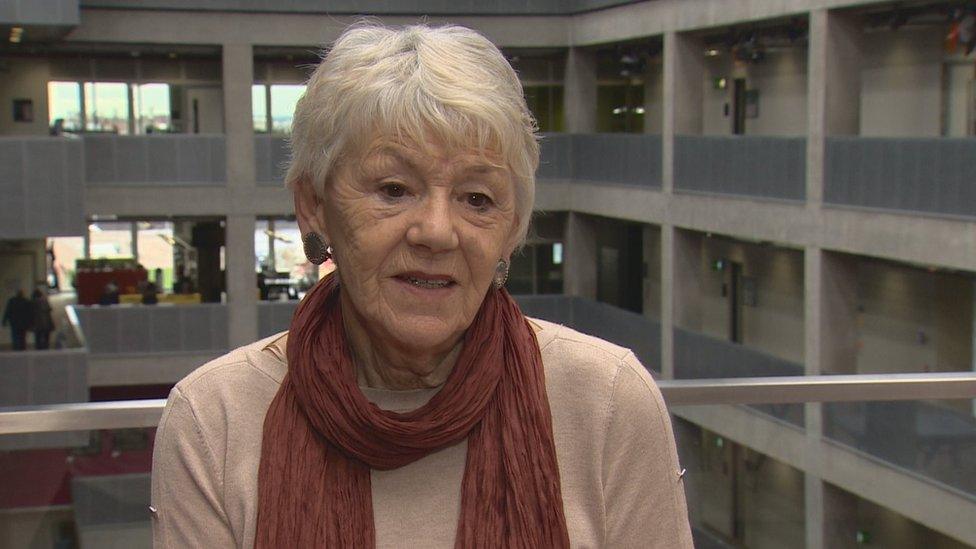Catching the park killer who vanished 'like a ghost'
- Published
Grainy CCTV footage from a moving bus captures killer Marek Harcar abducting his victim Moira Jones
On 29 May, 2008, the battered body of Moira Jones was found in a Glasgow park. Here, former detective Derek Robertson and forensic scientist Carol Rogers speak about the roles they played in catching the killer who vanished "like a ghost".

"You need to take a call. We have found a body in Queen's Park."
Det Chief Insp Derek Robertson was in the middle of a meeting at Cathcart police office on a late May morning in 2008 when he was interrupted by the urgent message.
Ten minutes earlier a ranger had discovered a semi-naked woman's body lying face down behind a privet hedge.
Mr Robertson, who was then head of CID for the south side of Glasgow, recalled: "My first instruction was 'lock the park down - the perimeter of the park is the crime scene.'"
The senior detective had previously trained in disaster and victim identification but it was a bold call that surprised many colleagues as the park covers 148 acres.
Detectives were confronted by a chaotic crime scene with business papers and toiletries among the items scattered near the body.
The victim had no identification so officers checked missing persons' reports and started ringing round hotels to see if any guests had failed to check out.
But recently-dated invoices provided the strongest lead.
Mr Robertson said: "We did not want to declare our hand so we contacted people to say we had found paperwork and just wanted to make sure no fraud had been committed."
Each request was met with the same answer.
The victim - sales executive Moira Jones
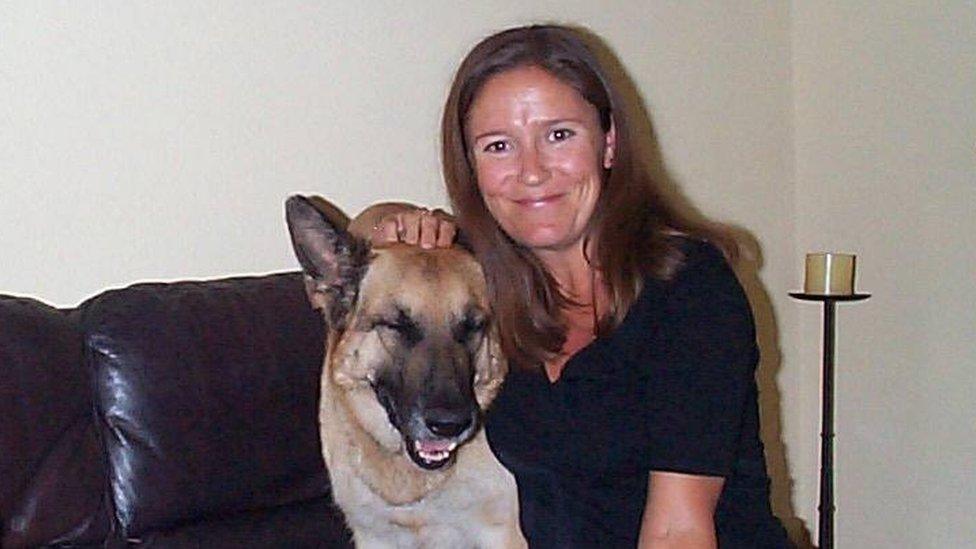
Moira Jones cuddling her brother's German Shepherd, Crystal, in Perth, Western Australia in 2001
The documents belonged to a sales executive for drinks giant Britvic.
Her name was Moira Jones and she lived in a tenement flat on Queen's Drive, which overlooked the park.
No-one was home and after forcing entry to the property officers found family photographs which confirmed their initial suspicions.
Moira, 40, had lived in Glasgow for five years but was originally from Weston in Staffordshire.
As detectives pieced together her final movements they discovered she left her boyfriend Paul Thompson's flat in Minerva Street, Cranstonhill the previous night after they had an argument.
That explained the fact Moira was carrying an overnight bag when she was ambushed, less than 60 yards from her front door.
Mr Thompson was taken in for questioning and his home was searched but it quickly became clear he wasn't a suspect.
Sexually-motivated crime
Experts called to the scene included a botanist and an entomologist, in case insect analysis was required to establish the time of death.
Lead forensic scientist Carol Rogers recalls: "As soon as I saw her I knew it was going to be sexually motivated because of the state of her clothing."
The belongings discarded by the killer had to be recovered and documented before she could start examining Moira's body.
Ms Rogers said: "There was no obvious entry or approach path so we had to consider any evidence that could be present on the bushes or the shrubbery.
"They are quite good for catching things - fibre, skin, clothes.
"We did find a little blood and hair on the side of the bushes, at the opposite side from where Moira was, so we could establish that she had been injured in there."
The detective - Derek Robertson

Derek Robertson reached the rank of assistant chief constable before retiring in 2016
Under the cover of a tent, Ms Rogers recovered a treasure trove of forensic evidence.
One discovery in particular proved hugely significant.
Ms Rogers said: "There was no semen externally on Moira's body at all which meant I could go to court and say that when sexual intercourse had occurred she was either unconscious or dead.
"She certainly never moved afterwards."
This meant the killer could not claim the sex was consensual and that someone else must have killed Moira after they parted company.
A post-mortem examination later revealed the businesswoman suffered 65 injuries during an ordeal which lasted more than two hours.
The savage nature of the crime suggested it was not the work of a first offender.
Ms Rogers said: "We processed the intimate swabs and worked through the night and into Saturday.
"We got a full DNA profile from the scene and then got no hit on the database."
The UK system also failed to deliver a match.
The forensic scientist - Carol Rogers
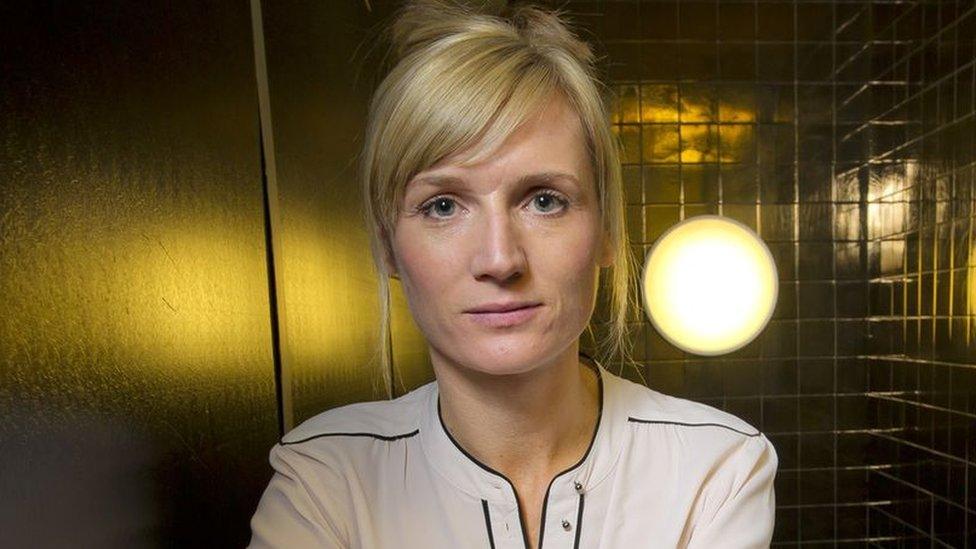
Carol Rogers has worked on many high profile investigations and helped convict serial killer Peter Tobin for the 2006 murder of Polish student Angelika Kluk
During the early stage of the investigation suspicion fell on the 22 registered sex offenders living nearby.
Police also compiled a list of everyone who had committed a criminal offence in or around the park, including underage drinkers.
Both lines of inquiry drew a blank.
Cracker-style criminal profilers and geographical profilers - who study crime scenes for clues as to where killers might live and work - were also recruited.
Officers on the ground carried out extensive door-to-door inquiries and took more than 3,000 statements and 250 DNA samples.
And a dedicated CCTV team collected and studied hours of footage.
On 2 June, with the killer still at large, Moira's devastated family agreed to issue a media appeal.
Afterwards Det Chief Insp Robertson told journalists that his team had established a point of first contact between Moira - who was 5ft 4in and less than nine stone - and her killer.
A piece of handbag strap and some toiletries had been recovered on a grass island on Queen's Drive.
The spot was just 10 yards from where Moira parked her black Toyota Rav4, at about 23:30 on 28 May.
This became known as the "strike scene".
The next breakthrough in mapping Moira's movements was provided by CCTV from an unlikely source.
A passing First Bus captured footage of a couple crossing Langside Road and walking along the perimeter of the park.
Mr Robertson said: "He is monstrously bigger than Moira.
"He has control of her and he has control of her property [an overnight bag].
"He is deciding where she is going."
In light of what happened next, Ms Rogers said: "The CCTV from the bus, I think, is the worst thing I have ever seen. It's horrendous."

CCTV of Moira on the day she was abducted and the chilling clip, captured on a passing bus, which shows her being led to the park
A holly bush near the tennis courts was identified as the second key location after a witness told police he had seen a couple there.
A search recovered six buttons from Moira's blouse and a cigarette butt, which matched the suspect's DNA.
Her body was found the following morning near the centre of the park, more than 300m away.
Meanwhile, the CCTV trawl uncovered footage of a mystery man leaving the park, near Queen's Park Baptist Church on Balvicar Drive, at 02:15.
Separate clips captured the same figure, who had a distinctive swagger, discarding a laptop and then checking the back of his hand as he walked along Nithsdale Road.
Detectives consulted the UK National Criminal Database to see if such an offending pattern had been seen before - but the killer's identity remained a mystery.
Mr Robertson said: "We were checking everybody out and we were doing everything but our intelligence was still pretty poor.
"Basically, what we were dealing with was a ghost."
Research into previous sex attacks in the area then highlighted a recent unsolved case, near the new Victoria Infirmary Hospital.
This led to an extension of house-to-house inquiries.
On 12 June Det Chief Insp Robertson was in the gym hall at Cathcart police station with the CCTV team when he was interrupted.
Name for 'Male One'
The officer said: "Boss, you need to hear about this.
"I think we have a breakthrough."
An Eastern European witness had been traced.
He added: "She is living in a bedsit round the corner.
"She said a guy visited her for a few days and left after Moira was killed."
It had taken two weeks but police finally had a name for the profile which had been labelled Male One.
The killer - Slovakian Marek Harcar
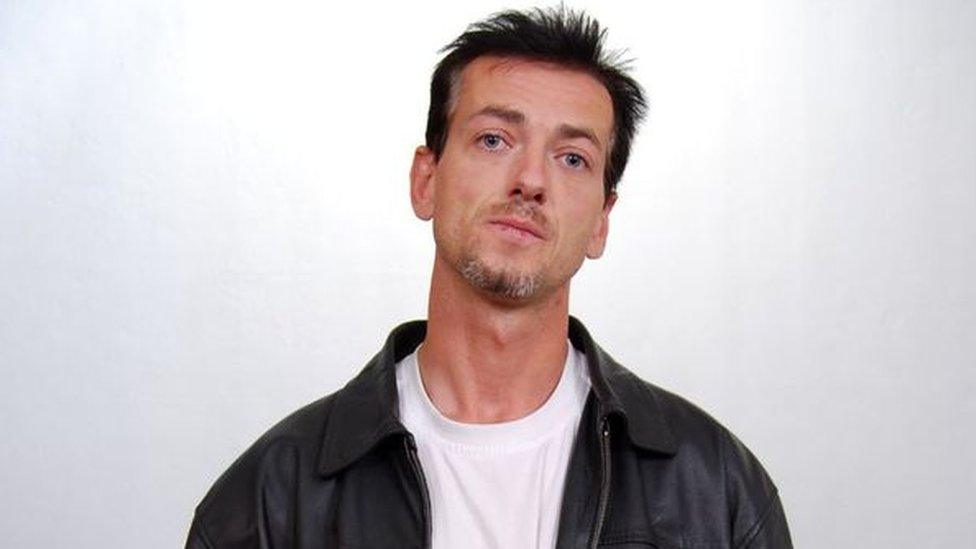
Marek Harcar pictured wearing the leather jacket which was later found to contain tiny spots of Moira's blood
The "ghost" was Marek Harcar.
Czech-born housekeeper Lucie Pechtlova told police she met Harcar the previous year when they worked in Liverpool.
The Slovakian arrived in Glasgow on 18 May and spent his time drinking heavily and watching pornography.
Harcar, 32, slept in the same bed as Lucie but she always turned down his sexual advances.
Around 22:00 on 28 May the former soldier left the bedsit for his first and last night out in Glasgow, returning at 03:15 the following day.
From then on Lucie said Harcar, who was a 6ft 3in kickboxing enthusiast, appeared "scared of something".
At dawn on 1 June he walked out of 38 Queen's Drive and fled Scotland, without his belongings.
Lucie packed his possessions into a bag and threw it in a cupboard.
The contents were later sent to the lab where Ms Rogers focused on two stains on Harcar's black and white duvet.
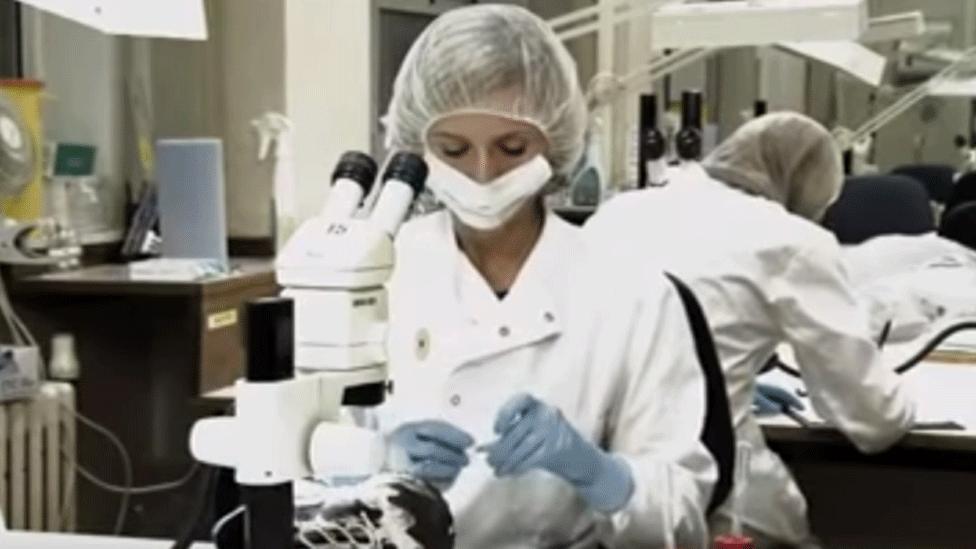
Stains on a black and white duvet was the focus of forensic scientist Carol Rogers
In the early hours of 14 June, she phoned Mr Robertson and began by apologising for the delay.
He said: "No bother, Carol. Just tell me."
She replied: "It's him."
Three days later the Crown Office obtained a European Arrest Warrant and faxed it to the Slovakian authorities.
And within 24 hours Harcar was arrested hiding in a friend's house in the rural village of Nalepkovo, in the Kosice region.
Among the items recovered were his black leather jacket, which was later found to have tiny specks of Moira's blood on it.
The extradition process took four weeks to rubber stamp and on 16 July Harcar arrived back in the UK.
Mr Robertson said: "I remember one of the things he said was that we were working with Disney in America to superimpose him into the CCTV images.
"I thought 'If that's his defence then I've done my job properly'."
'Wickedness rarely encountered'
The killer maintained his innocence but after a 21-day trial at the High Court in Glasgow the jury returned a unanimous guilty verdict on 8 April, 2009.
Lord Bracadale ordered him to spend a minimum of 25 years behind bars.
He told Harcar: "Your conduct that night reflects a level of wickedness very rarely encountered."
The court heard he had 13 previous convictions, including four for violence.
Mr Robertson said: "There was a horrible coldness about the whole thing.
"It was as if he was totally devoid of human feeling for what he was doing."
Moira's parents, Bea and Hu, and brother, Grant, attended court every day and sat through hours of harrowing evidence.
The parents - Bea and Hu Jones
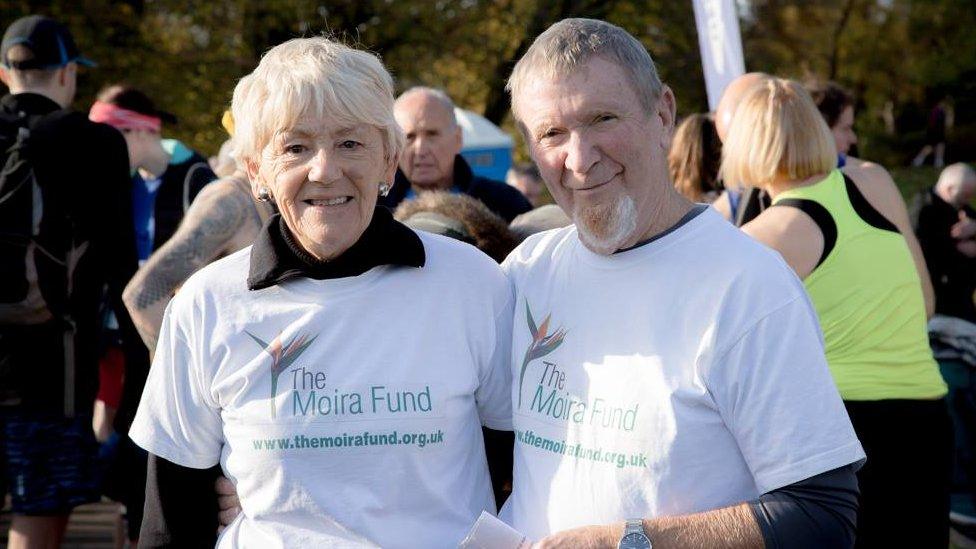
Moira's parents, Bea and Hu, at The Moira Fund's annual 5k run in Queen's Park
They later launched The Moira Fund to help families who have lost loved ones in tragic circumstances.
The 10th anniversary comes less than two months after what would have been Moira's 50th birthday.
Ms Rogers, who is now a trustee of the Moira Fund, said: "I will never, ever forget it.
"It is just one of those real horror stories of a girl going home and being grabbed off the street."
Mr Robertson, who retired in 2016, said: "I always think of the family every year.
"I have tremendous empathy for them.
"One night in Glasgow changed their lives forever."
- Published19 April 2018
